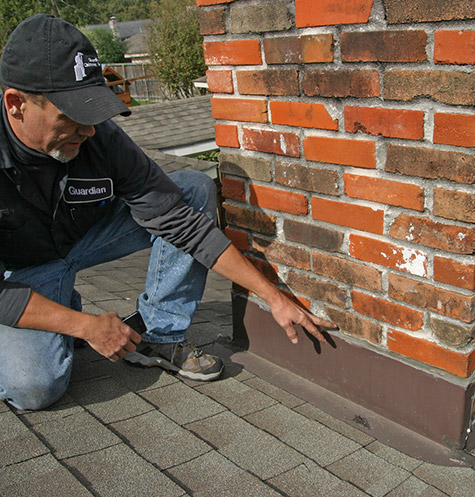Why Annual Chimney Inspections Are Critical
 According to every home-safety and fire-prevention organization, chimneys connected to wood-burning fireplaces should be inspected at least once a year. This is not erring on the side of caution, but rather going with statistics. Among the thousands of house fires every year in the U.S., a high percentage of them start as fires in chimneys.
According to every home-safety and fire-prevention organization, chimneys connected to wood-burning fireplaces should be inspected at least once a year. This is not erring on the side of caution, but rather going with statistics. Among the thousands of house fires every year in the U.S., a high percentage of them start as fires in chimneys.
What takes place during an annual chimney inspection?
A thorough chimney inspection looks at many elements of the fireplace/chimney system. One thing inspectors (usually called “chimney sweeps”) look for is damage to the chimney structure. Small cracks in the flashing or the bricks and mortar of the chimney can let in rain water, which will eventually cause significant damage.
For chimneys connected to wood-burning fireplaces, a very important part of the inspection is the assessment of creosote levels on the inside of the chimney liner. Creosote is a sticky, clingy byproduct of wood smoke, and it’s highly flammable. When creosote is ignited, the fire can be minor or major, depending on many factors. Part of a chimney inspection includes a good cleaning of the chimney liner to remove built-up creosote.
What if I don’t use my fireplace for long periods every day?
People mistakenly believe that sporadic use of a fireplace means less creosote buildup, but that’s not necessarily the case. Even with sporadic use, creosote accumulates. It’s impossible for the average homeowner to gauge exactly how much of this flammable substance is in the chimney at any given time. You may have a mild winter with little fireplace use one year, but the next year might be extra-cold with the fireplace going almost every day.
If the chimney isn’t inspected and cleaned prior to the start of this colder winter, a serious problem could be in the making. Homeowners should never assume what the condition of their chimney is – let a professional make that determination.
How do I know if I have a chimney fire?
A chimney fire can exist without anybody even knowing it, at least initially. It’s not like with a fire in a pan on the stove, which flares up and is dealt with immediately. Chimney fires can burn as hot as 2,000 degrees and create significant damage, and the longer they burn, the more chance there is for a catastrophe.
There are a few signs to watch for that indicate a chimney fire:
1. A larger-than-usual amount of heavy smoke
2. An unusual “hot” smell that you don’t normally smell
3. Rumbling deep within the chimney structure
4. Crackling and popping sounds
 If you ever experience any of these signs, call emergency services immediately.
If you ever experience any of these signs, call emergency services immediately.
The best way to deal with a chimney fire is to not have one. And the best way to do that is to have Guardian Chimney Sweep of Houston perform thorough fireplace and chimney inspections every year. Our only job is to make sure your chimney is in perfect working condition to ensure the safety of everyone who lives in your home. Call (713) 401-2011 with questions or to arrange an appointment.

 Tap to Call Now
Tap to Call Now